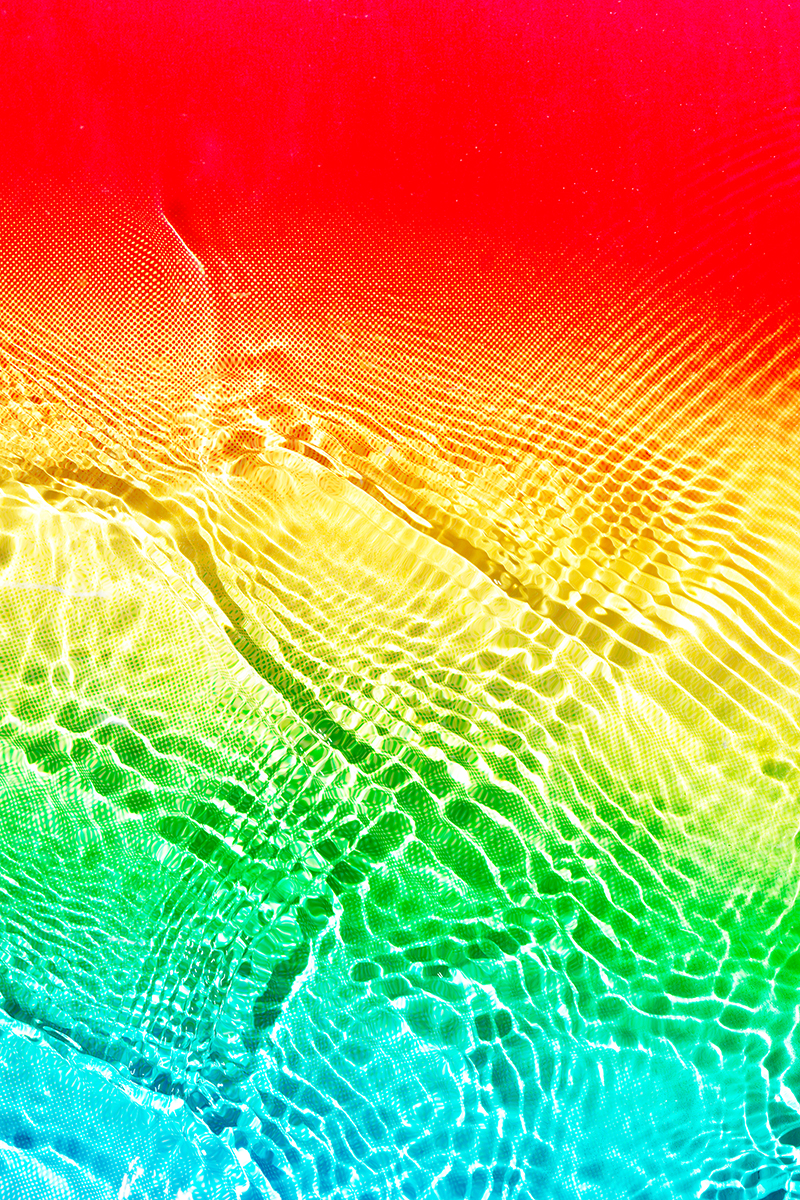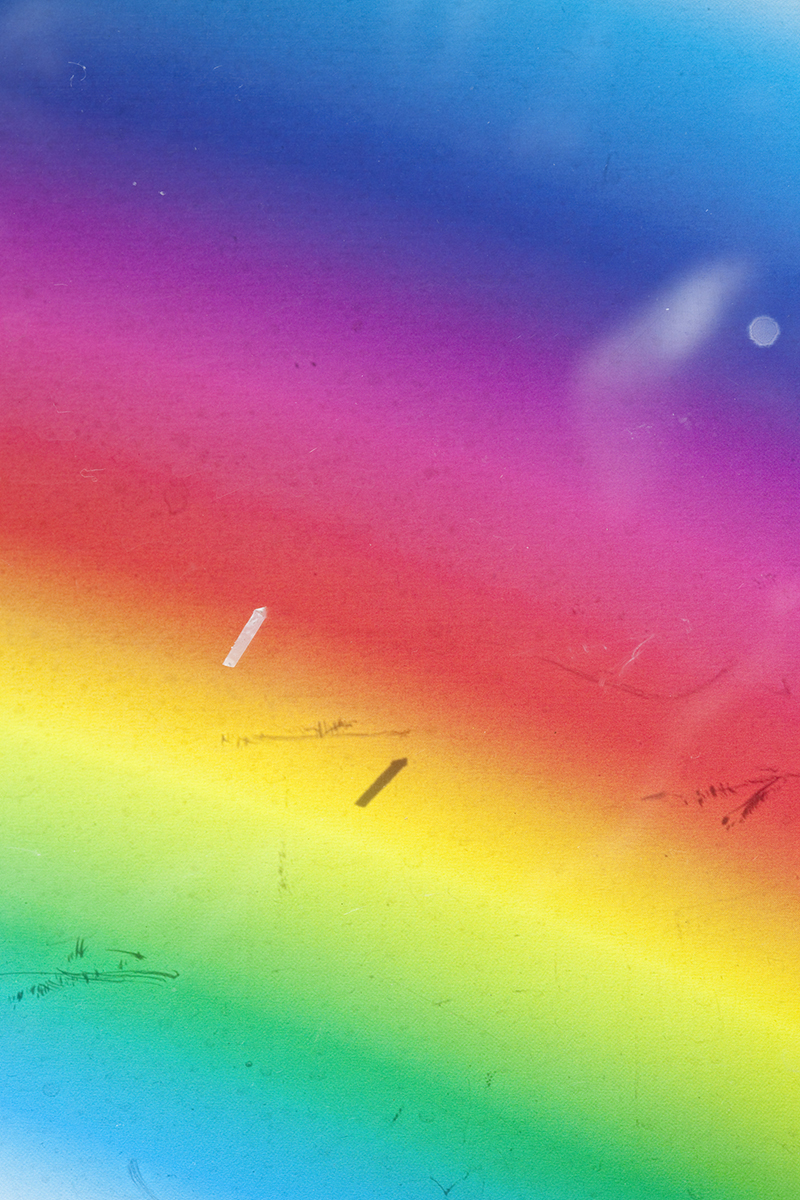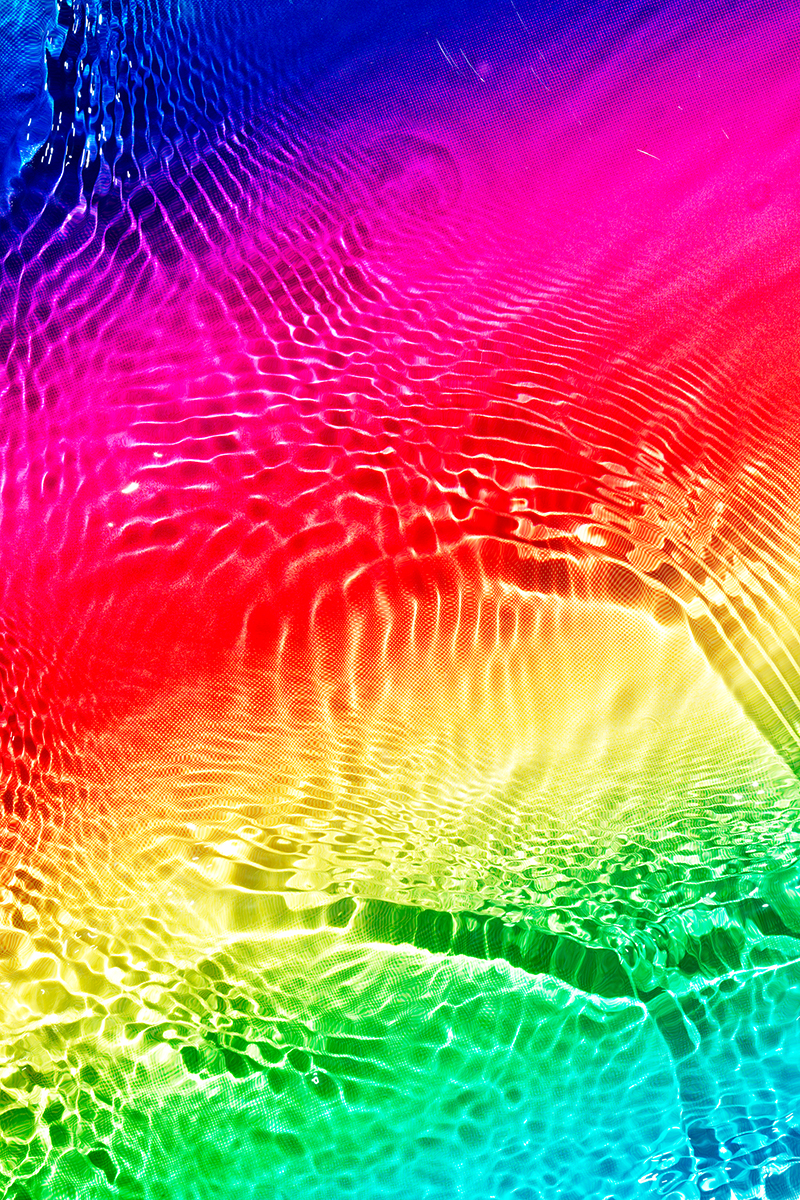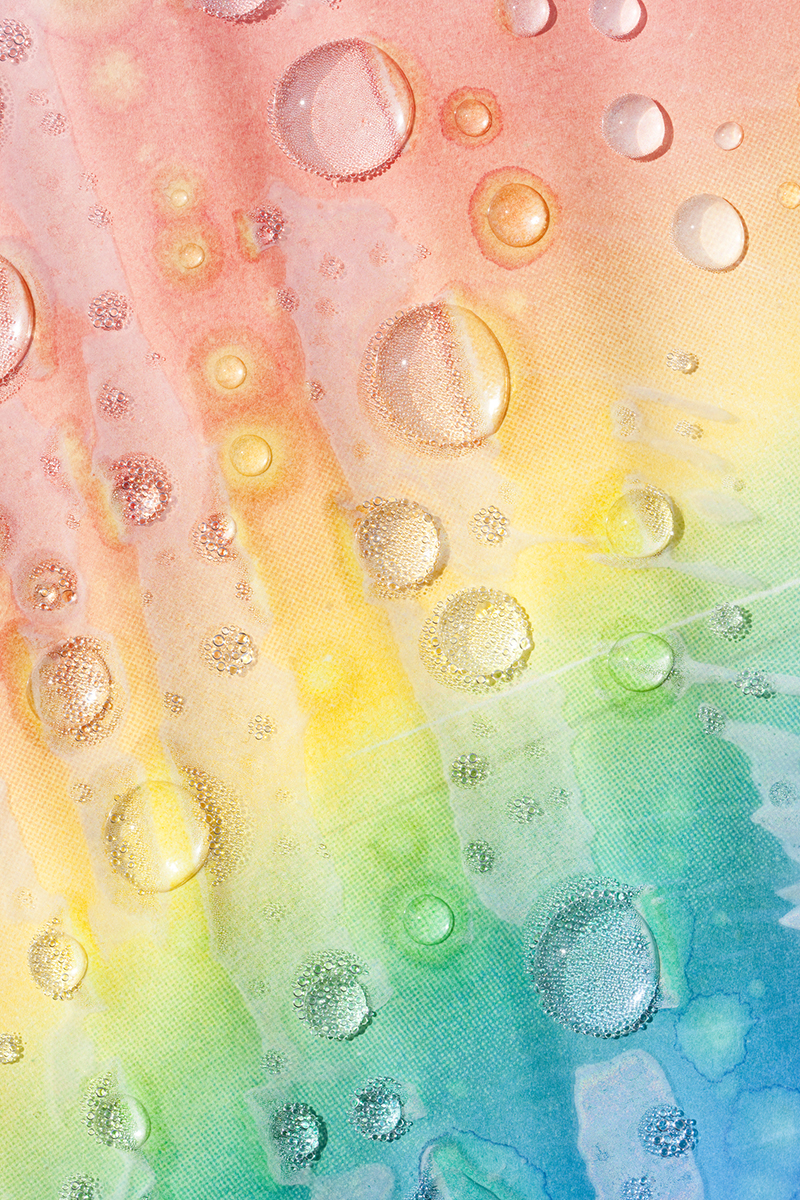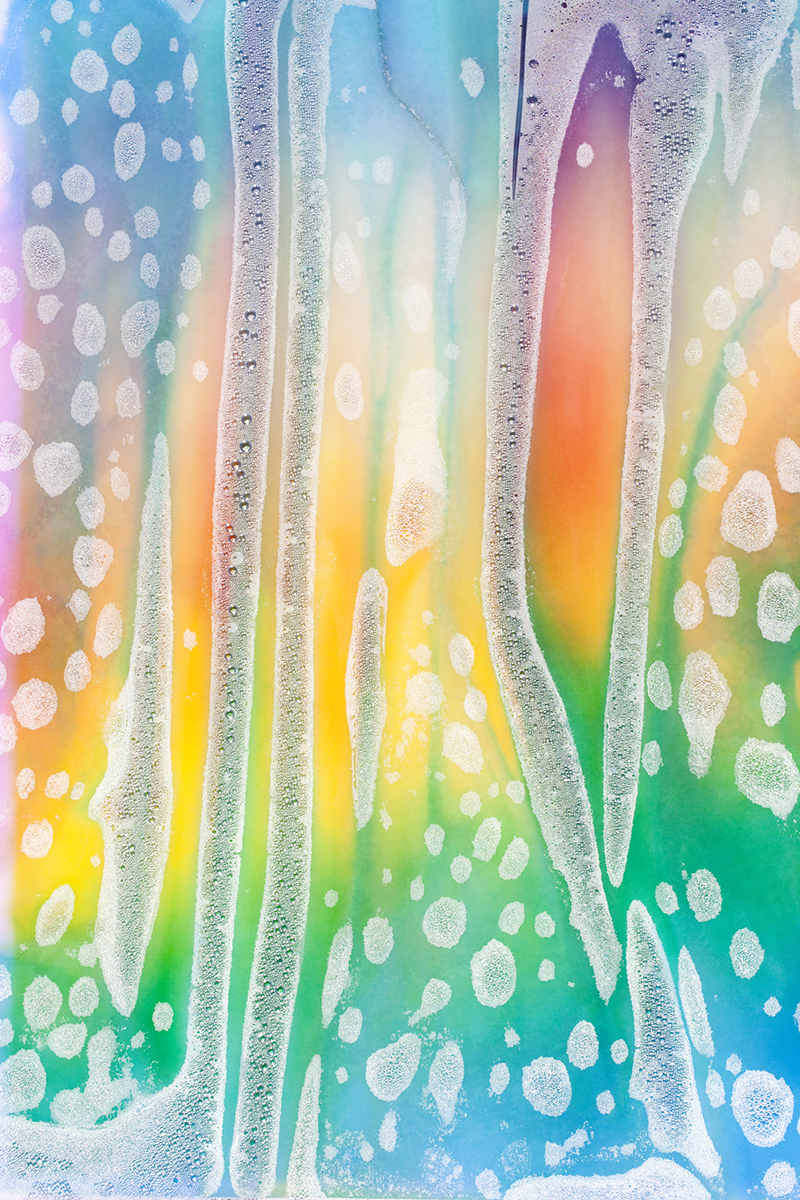Rainbow
Taisuke Koyama & Ivan Vartanian
Taisuke Koyama’s ‘Rainbow’ project has been ongoing since 2010. The consistent frame of his vertical format contains a dizzying array of patterns, textures and detail, demonstrating a sort of programmed randomness.
The project is organized around different groups: Rainbows, Melting Rainbows and Rainbow Waves. Each time I look at the work I find myself reinterpreting the project afresh. At first, it was a skewed portrait of Tokyo: the first rainbow photographed in Koyama’s work is a close-up of an advertisement for a canned drink that was plastered all over town. The campaign was a splash of colour against the grey more typical of Tokyo. Koyama then experimented with different techniques to adulterate the rainbow. For the Melting series, the print was placed outside covered with a plastic coating and exposed to the natural elements. The water on it is Tokyo rain water. The resulting melting is an effect of water trapped under the plastic surface causing vapour to build up under heat and sunlight. The macro lens that Koyama used to shoot the water-logged paper focused in on a level of detail to show a texture that was simultaneously graphic and photographic. Within this, the beads of water act as smaller, secondary macro lenses to the primary one the photographer uses – a lens within a lens.
Forty years ago, several photographers such as Takuma Nakahira, Daido Moriyama and Yutaka Takanashi experimented with graininess in their black-and-white images to bring the viewers’ awareness to a reality that was granular and elemental. Despite the colourful palette of Koyama’s work, I think that his photography connects to these gritty images of 1970s Japan. What he achieves in his choice of subject and shooting style is a similar awareness of the elementalness of things, how they are built through light and colour.
In the last few months, seeing these images again, I am drawn to the allegorical persuasion of the beads of water and how they refract light. The presence of water – otherwise invisible – becomes perceptible because of how light bends when passing through it. Thinking back on how I once thought of these beads as macro lenses in their own right, I now see Melting Rainbows as a self-referential project to parse the universe which we inhabit. I wonder what I will see when I look at the work again a few months from now.
Ivan Vartanian
Photography courtesy of Taisuke Koyama


